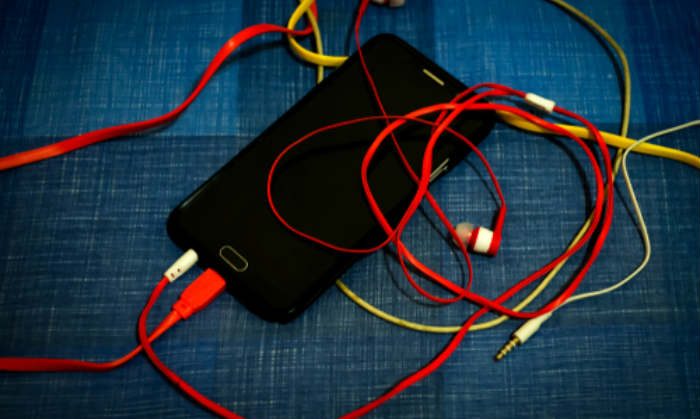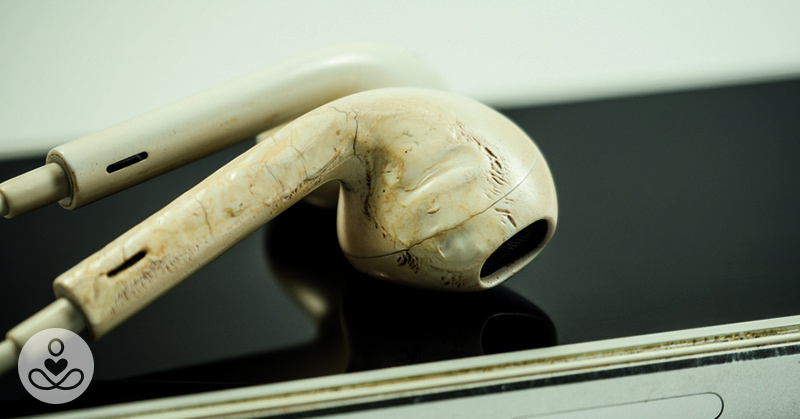This article was originally published in December 2018 and has since been updated.
A 16-year-old boy from Rembau, Malaysia was electrocuted to death while using headphones that were plugged into his charging mobile phone. (1) The victim, identified as Mohd Aidi Azzhar Zahrin, was found by his mother when she got home from work at 12:45 p.m.
According to the district police chief Deputy Superintendent, Anuar Bakri Abdul Salam, the boy’s 51-year-old mother had left for work at 7:45 a.m. She spotted her son lying on his bedroom floor but assumed he was sleeping.
“While at work, she felt uneasy and decided to return home to check on her son,” said the police chief. (2) “At home, she found him in the same position. She then tried to wake him up and as she touched him, the boy’s body felt cold.”
The medical report states that there were no bruises or external injuries present, apart from some burns on his left ear. However, there was blood coming from the victim’s left ear.
The victim’s brother, as reported by Yahoo7!, claimed to have felt a small electric shock when he touched the charging cable. We are still waiting for information about the specific make and phone model as they remain unclear. (3) An autopsy later revealed that the cause of death was likely electrocution. (2)
He Isn’t the First Whose Death Has Been Linked to an Electric Shock

There have been a few cases where deaths have been linked to headphone electrocution. Back in February 2018, The Sun reported that a 17-year-old girl from Brazil likely died from electrocution after “her phone, which was plugged into a charger, had been destroyed by a ‘huge electric charge.’” (4)
“The girl’s grandmother told the doctor that they found her granddaughter unconscious, lying on the floor and with headphones in her ears.”
On another occasion in May, 2018 a 46-year-old women in India fell asleep while listening to her headphones. Health officials confirmed “that a short circuit may have caused the electrocution.” (5)
This issue isn’t limited to developing countries either. In April 2014, a 28-year-old Australian woman was electrocuted while listening to earphones that were connected to a phone using a USB charger.
“We know absolutely that the charger itself failed, and that it arced between the 240 vold input and the five volt output. So that’s definitive,” said NSW Fair Trading’s Lynelle Collins. (6)
Upon investigation, the Department of Fair Trading found that the USB charger she was using failed to comply with Australian standards. Rod Stowe, Fair Trading’s Commissioner even issued a warning against using unapproved products. (6)
Related: Why You Should Stop Charging Your Phone in Your Car
Not All Chargers and Headphones Are Dangerous

As you have learned, the headphones in these cases have only been linked to the victims’ causes of death. Snopes even consulted six emergency room physicians to gauge the likelihood of death by headphone electrocution.
Turns out, none of them considered it likely – though they did acknowledge they needed more context and details about specific cases.
“The plug assembly converts high voltage (in Malaysia, 220V wall outlet) into low voltage before it enters the phone,” explained Dr. Eric Lavonas, professor of emergency medicine and medical staff president at Denver Health. (7) “And of course the phone is only putting out low voltage to the headset.”
A huge lesson here is to only use electronics that have been purchased from reputable retailers. Stores such as Best Buy, Target, Apple, or other mobile phone retailers will carry approved electronics. Whether you’re looking for a phone charger or new set of headphones, avoid purchasing them from convenience stores or kiosks.
Snopes highlights the fact that death by earphone electrocution is highly unlikely. It’s true – the cases are few and far between. For your own safety, however, stick to purchasing electronics from reputable retailers.
Read More: Fire Safety Tips for Preventing House Fires – from the Laundry Room to the Kitchen

